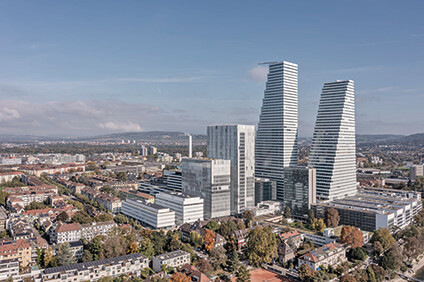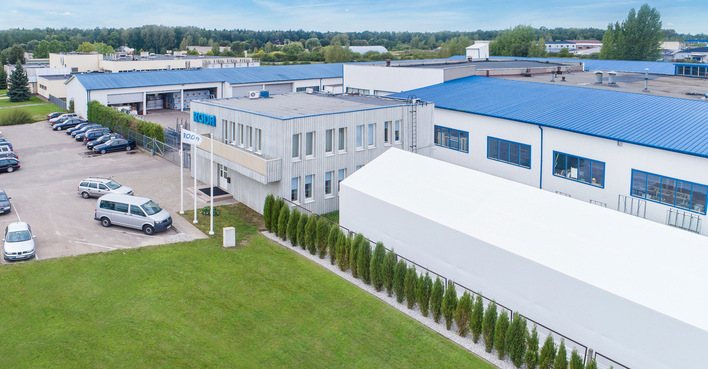Located on the French side of the France-Switzerland border, the circular B777 building on Cern’s Prevessin Campus stands at the edge of the forest and park.
The circular design, with a sheltered courtyard at its heart, seamlessly connects forest, park and plaza. Office, laboratory and workshop space are combined within the open timber building.
See also: Wood buildings and warm edge spacers for Paris 2024 Olympic Games

Henning Larsen Architects
Founded in 1954, 12 European countries came together to establish the largest research facility for particle physics. Today, Cern remains at the epicenter of scientific innovation, home to the world’s largest and most complex research instruments, notably the powerful particle accelerator: the Large Hadron Collider. Fittingly, the LHC is also a massive circular structure.
Public plaza
Drawing inspiration from the protected plazas at the heart of nearby Alpine villages, the space of the central courtyard serves as an extension of the office and indoor activities, connecting lab areas to informal meeting areas surrounded by greenery and offices in the inner circle enjoy views into nature.
This central hub connects to the restaurant featuring outdoor seating. During summertime, the leaves provide shade, in winter, the canteen terrace welcomes the rays of the sun, and in rainy weather, the passage functions as a covered space.
Low embodied and operational carbon

Henning Larsen Architects
Reducing embodied carbon, as well as operational carbon, is prioritized throughout the design, evaluating the effect the building will have on the environment through life-cycle assessments. To accommodate the possibility of reusing and recycling the structural materials, the structure is designed for disassembly by using simple, demountable and mechanical connections.
Also interesting: How insulating glass can help to heat wooden houses
The three-dimensional facade maximizes daylight whilst also self-shading to prevent solar radiation, resulting in lower energy consumption from cooling.














